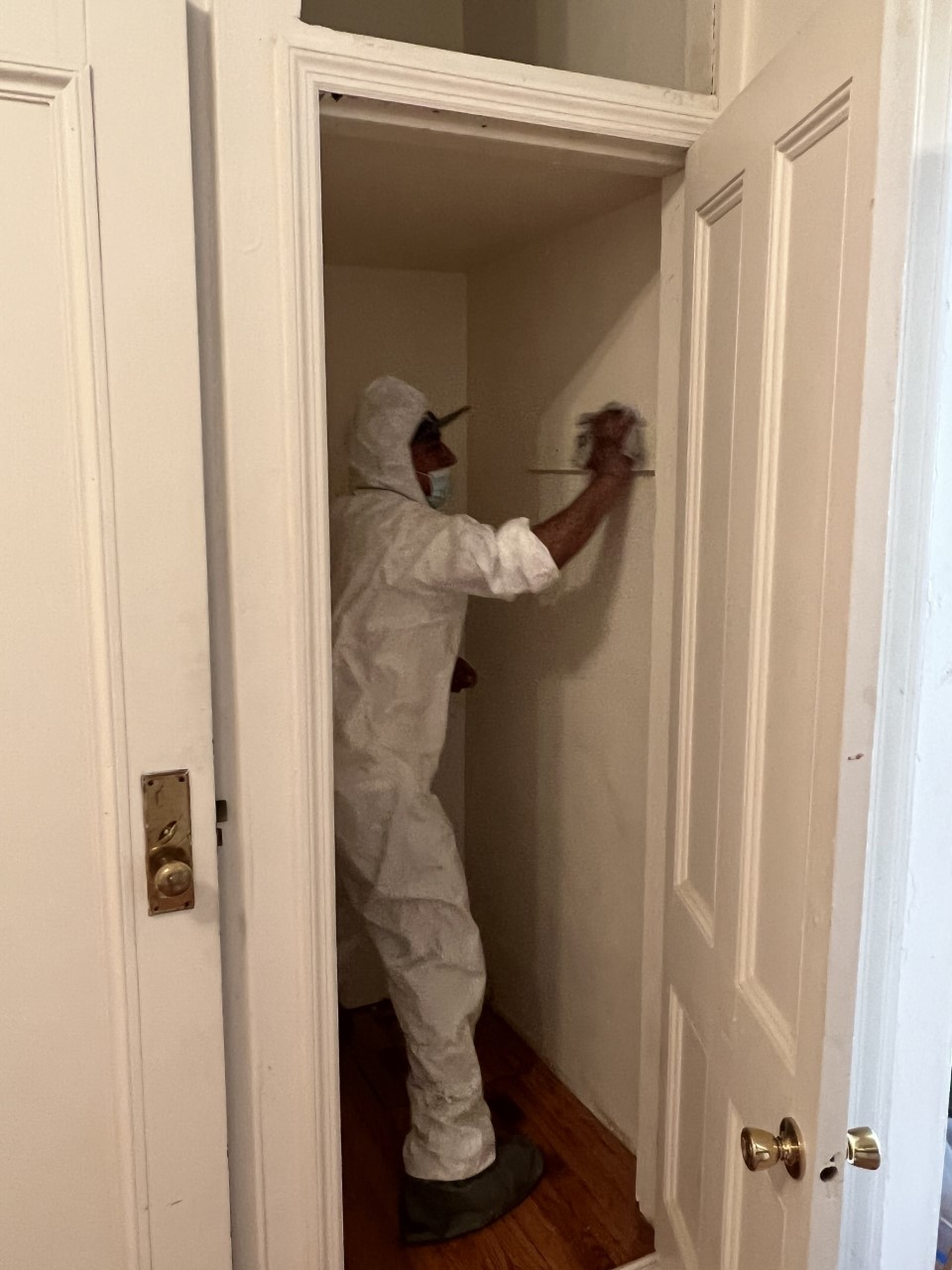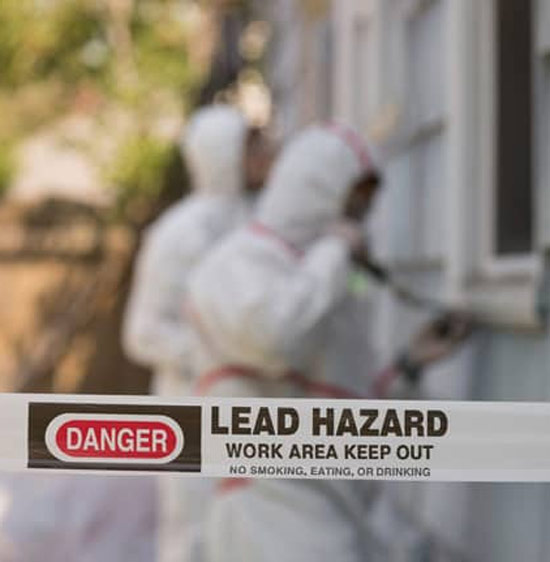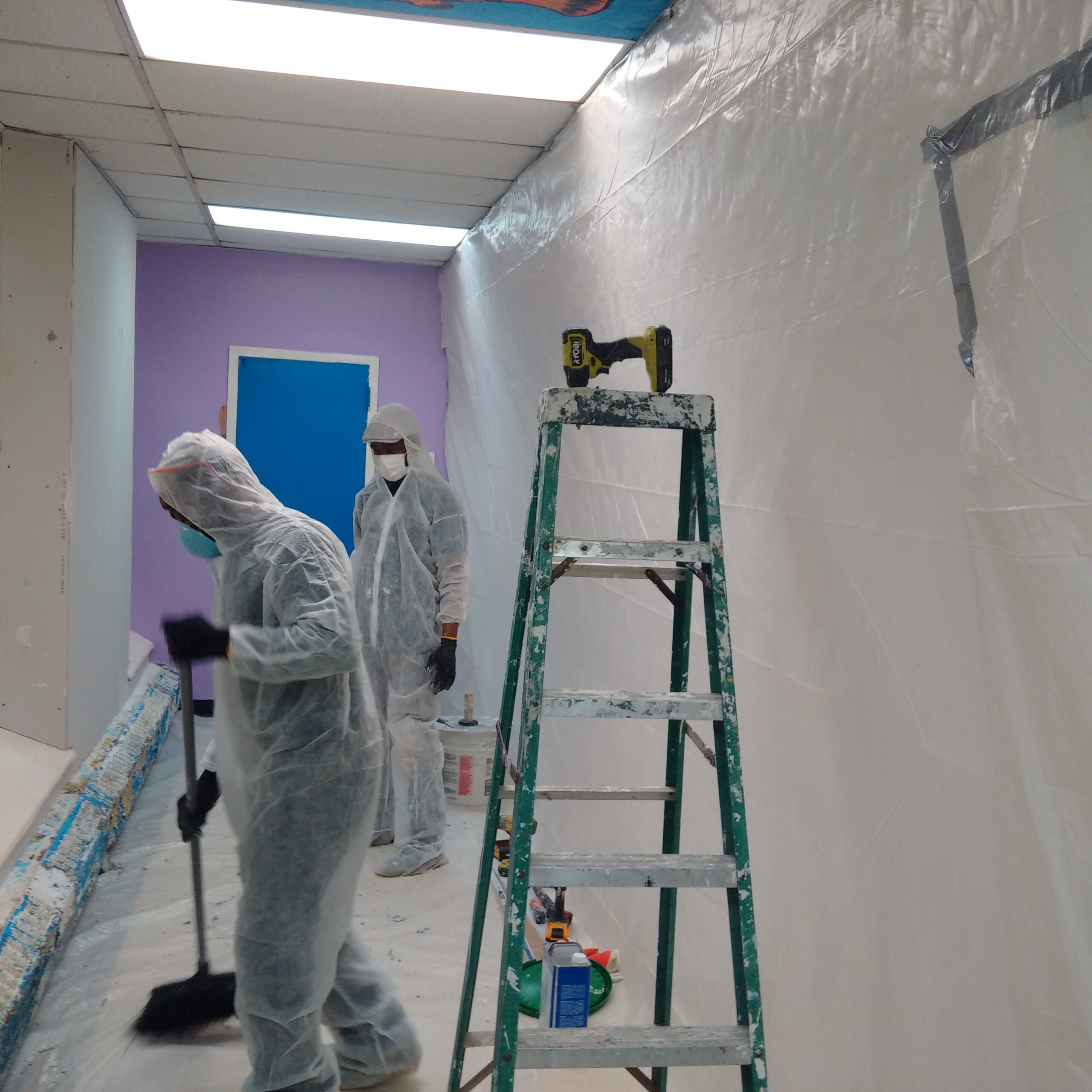Comprehensive Overview on Effective Lead Offense Removal Methods
In the world of ecological safety and security, attending to lead offenses requires a careful and organized strategy. This comprehensive guide starts by highlighting the essential initial steps of determining lead threats via sophisticated assessment and testing methods. Techniques such as XRF analysis and dirt wipe sampling are important in identifying contamination resources. In addition, the overview specifies on the relevance of sticking to stringent safety protocols throughout the elimination procedure, consisting of using correct PPE and separating impacted locations (Lead Paint Removal Company). The succeeding sections assure to review post-removal confirmation and precautionary methods, making certain lasting safety and security and conformity. Discover the complex details that make these techniques not simply efficient but necessary.
Identifying Lead Hazards
Recognizing lead dangers is an important primary step in alleviating the dangers associated with lead direct exposure. Lead, a poisonous metal, can be existing in various environmental tools, including paint, soil, water, and dirt. It positions extreme health dangers, specifically to children and expecting women, bring about neurological damage and developmental hold-ups. For that reason, exact recognition of potential lead resources is necessary for efficient removal.
The initial phase in determining lead threats entails understanding common lead sources within the built environment. Structures built before 1978 are particularly vulnerable because of the common usage of lead-based paint throughout that duration. In addition, dirt contamination can take place from weakening exterior paint, industrial discharges, or historical use of leaded gas.
One more considerable source is lead piping and pipes components, which can leach introduce drinking water. Consumer goods such as toys, ceramics, and imported products might additionally include unsafe lead degrees. Significantly, work-related settings and hobbies entailing lead can track pollutants into homes.
Assessment and Testing
When attending to lead risks, effective evaluation and testing are extremely important. Preliminary assessment commonly includes a visual examination to determine potential lead resources, such as deteriorating paint or infected dust.

Dirt clean sampling is one more critical method, specifically in residential settings. By gathering examples from floorings, windowsills, and other surface areas, this approach provides insights right into possible direct exposure dangers. Dirt screening around building boundaries is important to identify lead contamination that could position dangers, especially to kids.
Safe Elimination Procedures
Upon completing complete analysis and screening, applying secure elimination treatments is the following essential stage in resolving lead threats. This procedure makes certain that lead-contaminated products are successfully and safely eliminated, lessening danger to both workers and residents. The initial step entails separating the damaged area using plastic sheeting and proper sealing strategies to avoid the spread of lead dirt.
Workers should put on appropriate individual protective tools (PPE), including respirators, gloves, and disposable coveralls, official statement to mitigate direct exposure. Utilizing Read More Here specialized tools and damp approaches, such as wet sanding or making use of HEPA-filtered vacuum cleaners, lowers the diffusion of lead bits. It is critical to stay clear of completely dry sanding or abrasive blowing up, as these techniques can produce dangerous lead dust.
Waste disposal is an additional essential element; all contaminated products need to be safely nabbed and labeled according to EPA and local regulations. Additionally, complete cleaning of the workspace with HEPA vacuum cleaners and wet wiping makes sure the removal of residual lead fragments.
Post-Removal Verification

Confirmation of effective lead elimination, recognized as post-removal confirmation, is necessary to ensure the security and habitability of the remediated area. This assessment ensures that all known sources of lead have actually been resolved and that no visible indications of contamination continue to be.
Following the visual assessment, ecological tasting is conducted. This includes collecting dust, soil, and occasionally water samples from the remediated area. Accredited labs assess these samples to gauge lead levels, ensuring they fall below the security thresholds established by regulatory bodies such as the Epa (EPA)
Furthermore, air high quality screening might be executed to identify air-borne lead fragments, specifically in situations where extensive lead-based paint elimination or improvement has actually taken place. The results of these tests provide quantitative information validating that the lead degrees are within permissible limitations.
Inevitably, post-removal confirmation serves as an essential checkpoint, verifying the effectiveness of the lead reduction initiatives and protecting the health of owners and site visitors.
Precautionary Measures and Upkeep

A vital safety net consists of making use of lead-safe accredited service providers for any kind of restoration, repair service, or paint activities. These specialists are learnt practices that reduce lead dust and particles. Additionally, preserving painted surfaces to stay clear of breaking or peeling is important, as wearing away paint can release lead bits right into the environment.
Educational efforts targeting residential property owners and renters pertaining to the risks of lead and the relevance of reporting any possible hazards can even more improve preventative efforts. Routine cleansing making use of HEPA vacuums and damp mopping techniques can considerably reduce lead dust accumulation.
Final Thought
In recap, reliable lead violation removal demands a precise technique incorporating comprehensive evaluation, exact screening, and rigorous elimination treatments. Ensuring safety with correct seclusion and individual safety tools remains critical. Post-removal verification by means of ecological tasting and air quality screening substantiates compliance with recognized security requirements. In addition, ongoing evaluations and maintenance are necessary to alleviate future lead threats, thus securing public health and wellness and making sure sustained compliance with regulatory requirements.